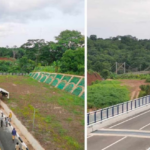In the midday sun of Kasoe-Namoo in the upper east region, the roof of Regentropfen College of Applied Sciences gleams from a mile away. The effect, though, comes from what’s on the roof: a gleaming array of solar panels.
Since 2013, this is where the Regentropfen Education Foundation and its model schools have operated.
The main job of the 30-watt panels is to power the entire institution and its Sternstunden Happy Home for kids, which is part of the university’s environmental policy.
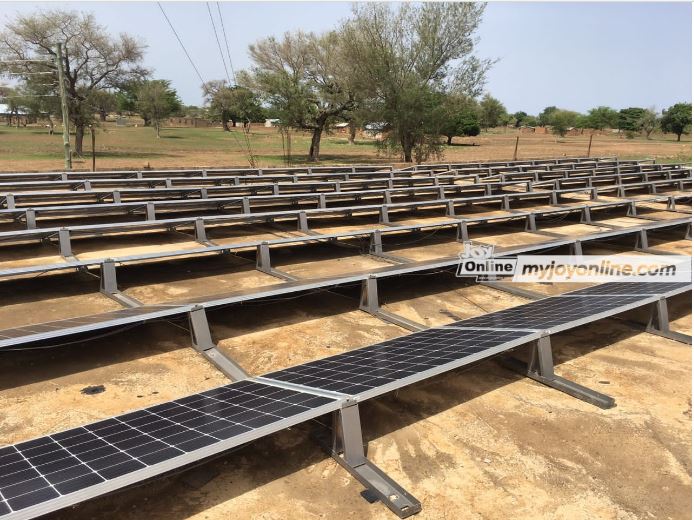
“At first, we had an 8-kilowatt power system generating and supplying one facility, which was the Library block, so as the facilities were added, we upgraded the system to a 30-kilowatt solar power system,” Edmond Akanzonge,” the solar project’s technician explained.
According to Isaac Korku Dorgbetor, lecturer of Agriculture for Social Change, institutions must find ways and means to contribute to the Sustainable Development Goals.
“So here at ReCas, we endeavour to actually bring results not to only train our students to just become professionals in society but to contribute their quota individually towards achieving the SDGs. We have some projects running which have to do with Clean energy.”
Although the university is connected to the national grid, electricity is both expensive and nonrenewable.
However, the cost of electricity has decreased significantly since the solar panels were installed nine years ago.
In terms of consumption, Edmund stated that each block would have paid around GH₵2,000, and “we have three facilities, so roughly GH₵6,000 to GH₵7,000 per month, and GH₵84,000 per year if we were not connected to solar.”
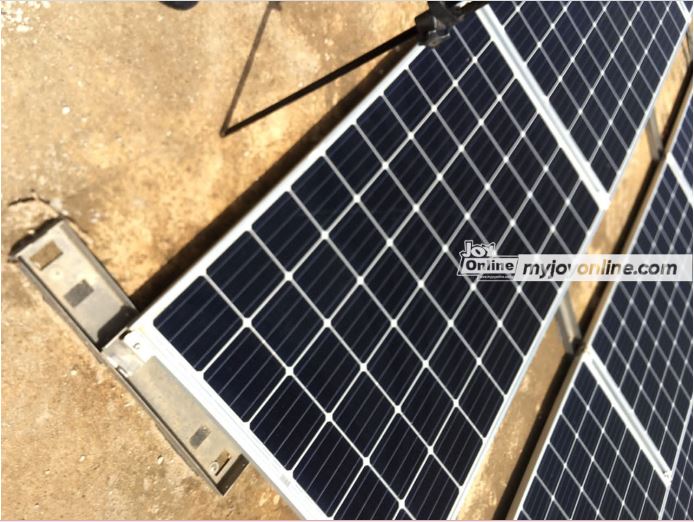
The university has 150 panels with 280 watts connected in streams and 120 batteries connected as banks.
The panels are part of a university-wide drive to promote clean and renewable energy in order to promote a more sustainable environment.
Regentropfen College of Applied Sciences has its entire campus powered by solar energy, showcasing the university’s clean energy innovations to protect the environment.
Rev. Fr. Dr. Moses Asaah Awinongya, President of the College and the Foundation, acknowledged a donation from the Global World AG in 2013 to build an 8KW solar system.
The Steftung Regentropfen arranged for the materials to be sent from Germany to Ghana, and the installation was completed by Jack Solar in Tamale.
In 2016, expansion plans were put in place to accommodate the growing number of users.
A German consultant was hired to assist in the installation of the increased system to a 30KW.
The President used his prize money from winning the education category of the MTN Foundation Heroes of Change in 2017 to fulfill the expansion plans.
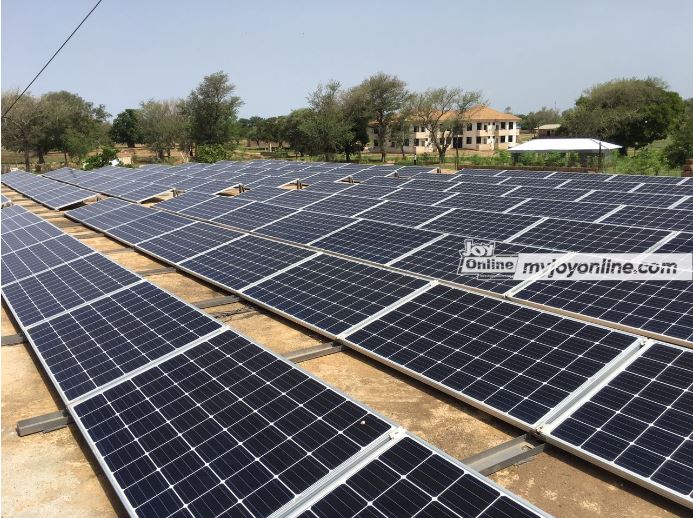
Rev. Fr. Dr. Moses Asaah Awinongya’s vision prompted the development of a solar-powered system for the entire University as part of efforts to promote clean and renewable energy.
The demand is enormous since students increasingly demand a reliable power supply.
Students said one of their best experiences is that there is continuous power supply for them to study on campus.
Students do not have to pay for light or water because solar energy provides both. This means that the university has a steady supply of water.
Sylvia Talata stated that she has benefited the most from the Institution’s solar energy since she was in senior high school.
“While our colleagues in other institutions sometimes complain there is no power – when it rains their transformer issues and the power is gone off, we don’t have such issues,” Mathew said.
Power has become so expensive in recent years that the Electricity Company of Ghana had declared ‘war’ on 29 private and public organizations, including a university, that owe the company GH₵120 million.
Despite receiving disconnection letters from ECG, some of these institutions owing as much as GHC45 million had shown no commitment.
Some members of Parliament may also be cut off from the national grid if they do not pay their bills.
PV modules capture sunlight and transform it into an electrical current that may be used. Because the sun shines all throughout the earth, solar energy can be used anywhere and can be independent of the utility grid since it can be combined with batteries for energy storage, making them cost-effective for remote locations.
Solar modules have no moving parts, which means they are low-maintenance and have a long service life of 25 years or more of assured electricity.
Previously, students at the university had to pay 200 cedis per year for electricity. However, with solar panels, it is free for both electricity and water.
The university has made significant progress by cutting costs.
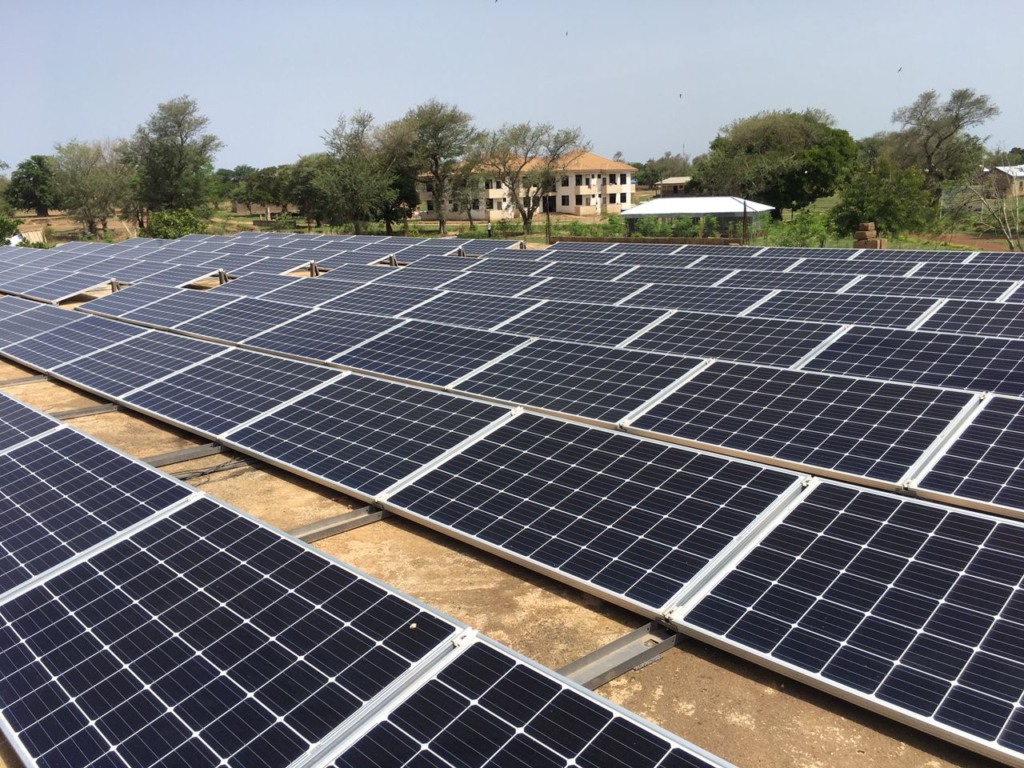
Yussif Agana, Assistant Registrar, Industrial Relations, believed that if 50% of universities had adopted solar power systems, it would have made a significant contribution to encouraging a green environment and, in effect, “we would have been able to reduce noise pollution, water pollution, and then air pollution by a significant percentage.”
Relying on solar panels however has some drawbacks, including their less effectiveness in rainy and cold seasons.
During such times, the university must rely on grid power for power.
Edmond Akanzonge feels that a solar array that generates enough power during the rainy season is necessary.
For the time being, the solar panels – and the decreased school fees that come with them – are assisting in reducing greenhouse gas emissions and mitigating climate change, which is vital for humans, wildlife, and ecosystems.
Solar energy can also help to enhance air quality and minimise energy-related water use.
Solar energy, as a renewable energy source, plays a key role in lowering greenhouse gas emissions and mitigating climate change, both of which are critical for the protection of humans, wildlife, and ecosystems.
Solar energy can also help to enhance air quality and minimize energy-related water use.


